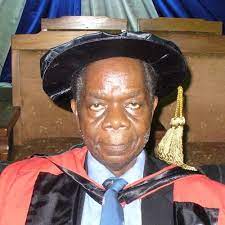The most popular peaceful use of nuclear energy is arguably, in electricity generation.
Nigeria requires 25,000 to 30,000 mw of electricity for any meaningful economic development.
Total output has been about 3,700 mw from total grid capacity of 6,000 mw.
About 5,000 mw was publicly generated in 2021.
The average has been between 4,000 and 6,000 mw in 2022 and 2023.
About 67% of total electricity demand is met by self-generation; accounting for 22% of total capital cost for industries.
The Energy Commission of Nigeria, ECN, puts the cost of such self-generated electricity at 19.05 naira/kwh as against 7.86 naira/kwh as generated by the gas-fired plants.
Energy is therefore said to be one of the most expensive inputs in Nigerian factories.
This has consequences: The most significant of which is that production cost rises and exports suffer; you therefore, tend to produce below capacity and employ fewer people.
In South Africa, with less than half of Nigeria’s population, her two nuclear reactors generate 5% of her 40,000 mw; U. S – 900,000 mw.
Seventy-seven per cent of electric power plants in Nigeria use fossil fuels. These fuels are not inexhaustible.
An Inter-Ministerial Committee on Power Generation estimates the reserve of oil at 34 billion barrels and gas at 4,293 billion cubic metres.
Africa has 8% of world Uranium reserves, Australia – 35%, Russia and other USSR Republics – 29%, Canada – 13%.
Actual production is: Canada – 33%, Australia – 15%, Nigeria – 10%.
This endowment in Uranium is a good point for those making a case for Nigeria to go nuclear and diversify her energy mix.
Nuclear electricity also causes less green gas pollution.
Forty million kilowatt-hour (kw/h) of electricity can be produced from one tonne of natural Uranium compared to 16,000 tonnes of coal and 80,000 barrels of oil burnt for the same output.
Carbon Dioxide emission in generating one kw/h of electricity is one kilogram for coal, 0.5 kg for gas and only 10 grams for nuclear power.
The challenges of global warming are fast making nuclear and renewable energy sources more attractive.
In the Kyoto Protocol, it was planned that Carbon Dioxide emissions be reduced by 60% by 2050.
Can the world keep global temperatures from rising above 2°C and pursue efforts to limit it to 1.5°C above pre-industrial levels as in the Paris Agreement of 2015?
So, even countries with huge oil deposits like Egypt, UAE, Venezuela, Libya, Iran and Saudi Arabia are into nuclear electricity; diversifying their energy mix and getting more eco-friendly.
While a nuclear power plant can work steadily, non-stop, for 50 years, a fossil fuel-fired plant must be shut every year, or so, for maintenance.
Some renewable sources like solar and wind, while environmentally-friendly, generate very little and depend on the vagaries of the weather.
The Federal Government, with the support of the United Nations International Atomic Energy Agency, IAEA, is currently pursuing a nuclear electricity programme.
The lead agency is the Nigeria Atomic Energy Commission, NAEC.
The local approving agency is the Nigerian Nuclear Regulatory Authority, NNRA.
Former Nigerian Minister of Science, Technology and Innovation, Dr Adeleke Mamora, in the International Ministerial Conference on Nuclear Power in the 21st Century in Washington DC, US, on 6 November, 2022 supported the nation’s quest to diversify her energy mix by using nuclear electricity.
He regretted that only South Africa is using nuclear electricity in the continent and Nigeria has taken a decision to fully explore and harness nuclear energy for the generation of electricity which will contribute to the country’s energy security.
The former Nigerian Minister of Science and Technology (2015 – 2022), Dr Ogbonnaya Onu, in an interview with the News Agency of Nigeria, NAN, on 21 October, 2006 said Nigeria is working with the Russian State Nuclear Corporation, Rosatom, towards achieving a nuclear electricity goal.

Again, while declaring open the Nigeria Energy Calculator 2050 Stakeholders Engagement in Abuja on 22 April, 2021 he defended the decision, saying nuclear energy will stabilise power supply in the country.
The stakeholders engagement is a planning model to offer choices in energy development which are examined alongside their environmental consequences.
Electricity supply is a big issue in Nigeria.
A World Bank report in 2021 says 78% of electricity consumers in Nigeria get less than 12 hours of power every day.
The Nigerian Electricity Regulatory Commission however, puts the figure at 55%.
Whichever way, nuclear electricity appears a tempting option for Nigeria.
Those opposed to nuclear electricity keep remembering the worst accident in a nuclear plant used to generate electricity in the world: the fire in Chernobyl Nuclear Power station, a Light Water Graphite reactor on April 26, 1986 in which about 30 people died, 300 suffered radiation sickness and another 3,000 developed Thyroid cancer, a mild form of cancer.
The other accidents were in Tokai-Mura in Japan in 1999, Core Meltdown at the Three Mile Island in U. S. in 1979, and the first of such accidents in the world in Windscale, U. K., from an early Plutonium Production reactor in 1957.
Then, the more recent incident in Fukushima, Japan, on 11 March, 2011.
These are the only accidents since the first commercial nuclear plant for electricity generation in Obninsk, Russia, on June 26, 1954.
Since then, safety standards have improved.
Up till today, more people drown when dams overflow or excess water is released from hydro dams.
In the recent incident in Fukushima, Japan, when higher than normal radiation leaked out, science and technology did not fail. Nuclear Power Plants in Japan, as in U. S., are built on earthquake-proof technology as is required by law in quake-prone zones.
The plants automatically shut down when the quake occurred and suffered no damage. Stand-by electric generators came on to power the water pumps cooling the system to remove residual heat.
However, the tsunami that followed submerged the standby generators, cutting-off power to the pumps, and this caused the system overheat, core meltdown and radiation leak.
There was no death and no one suffered serious injury.
There is always a lesson to be learnt as a people in quest of rapid economic growth and development face tough options in search of energy to power their aspirations.
The best choice, as history has shown, is to minimize the risks while aiming very high without forgetting, of course, to leave a better world for our children.
This choice, supporters of nuclear electricity argue, gives safe nuclear option an edge over all other sources of energy.
photo credit: indiatoday











